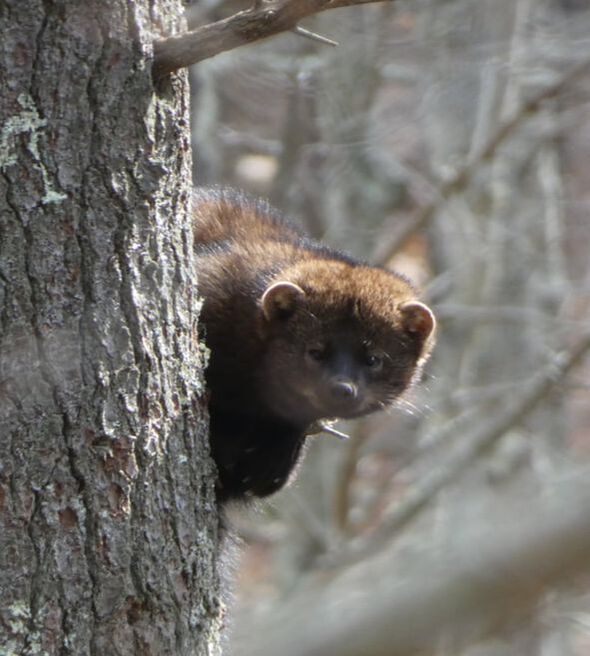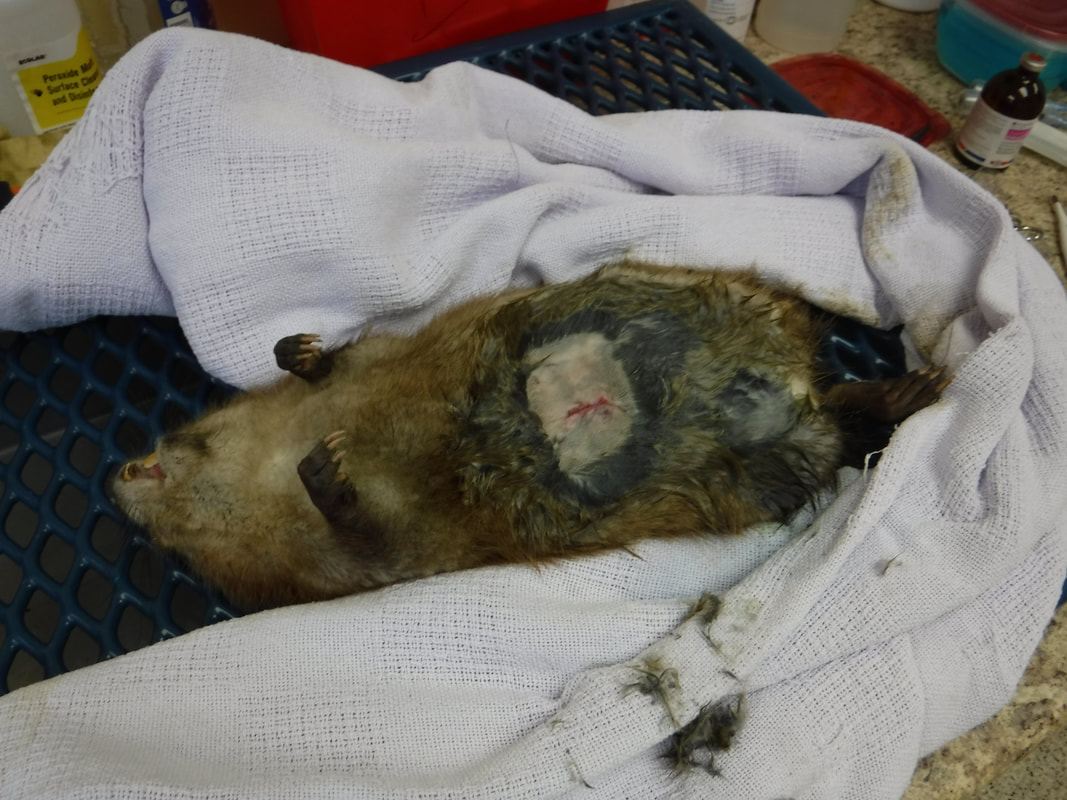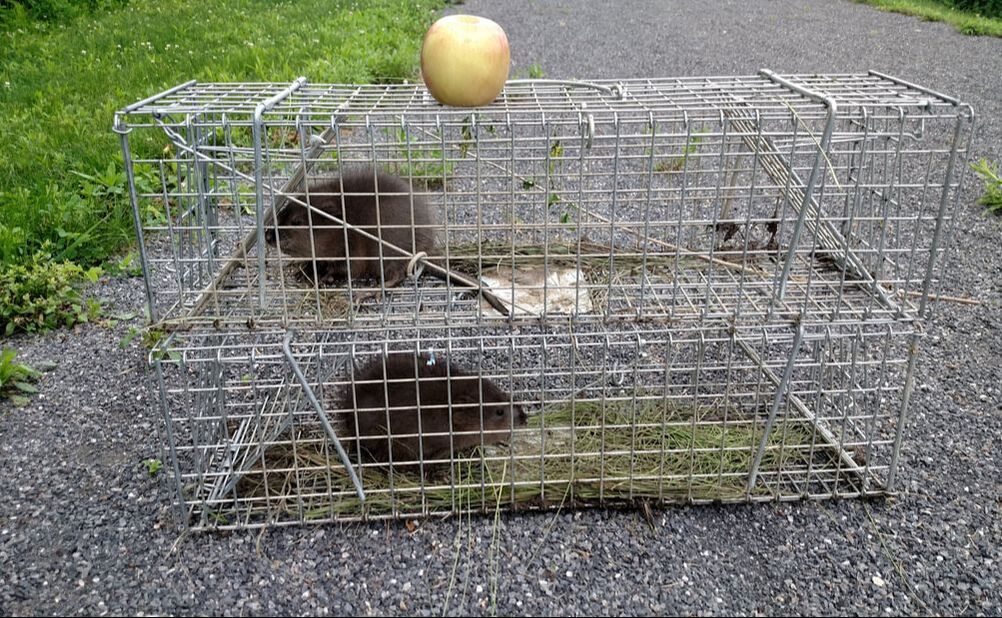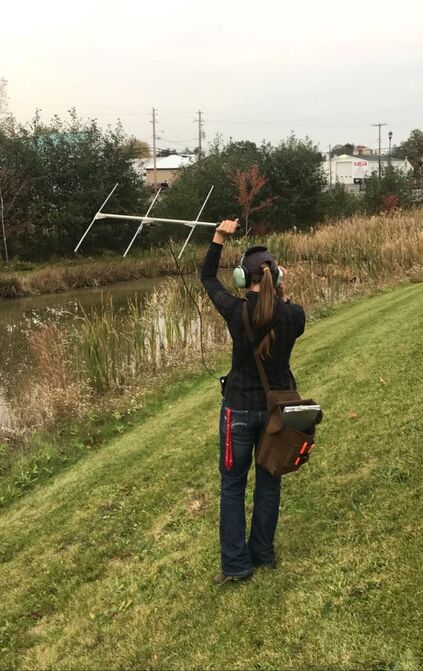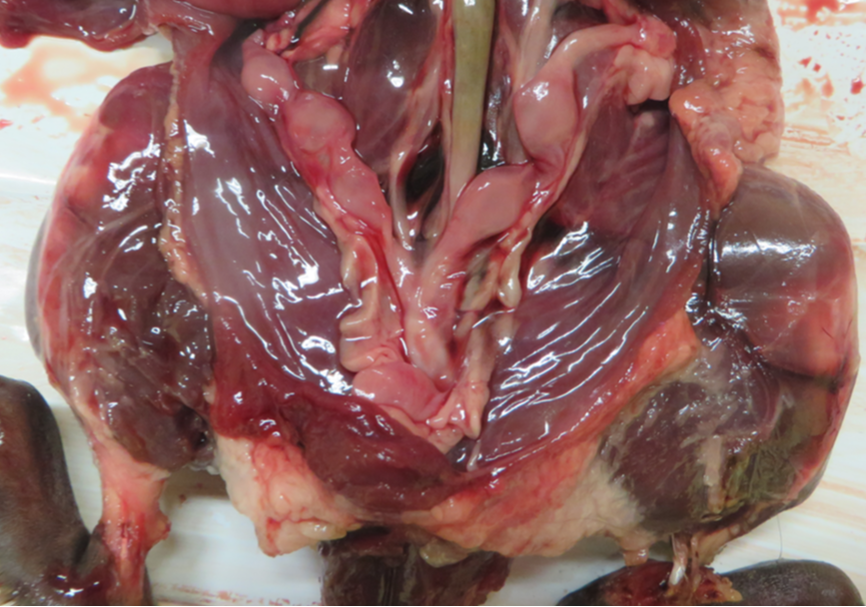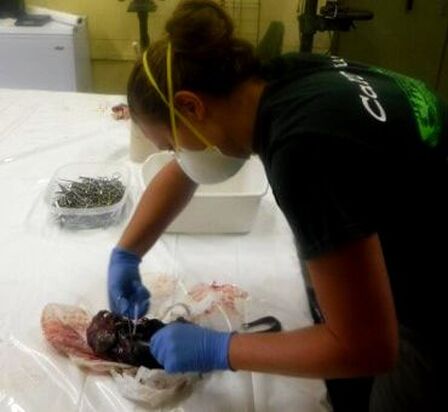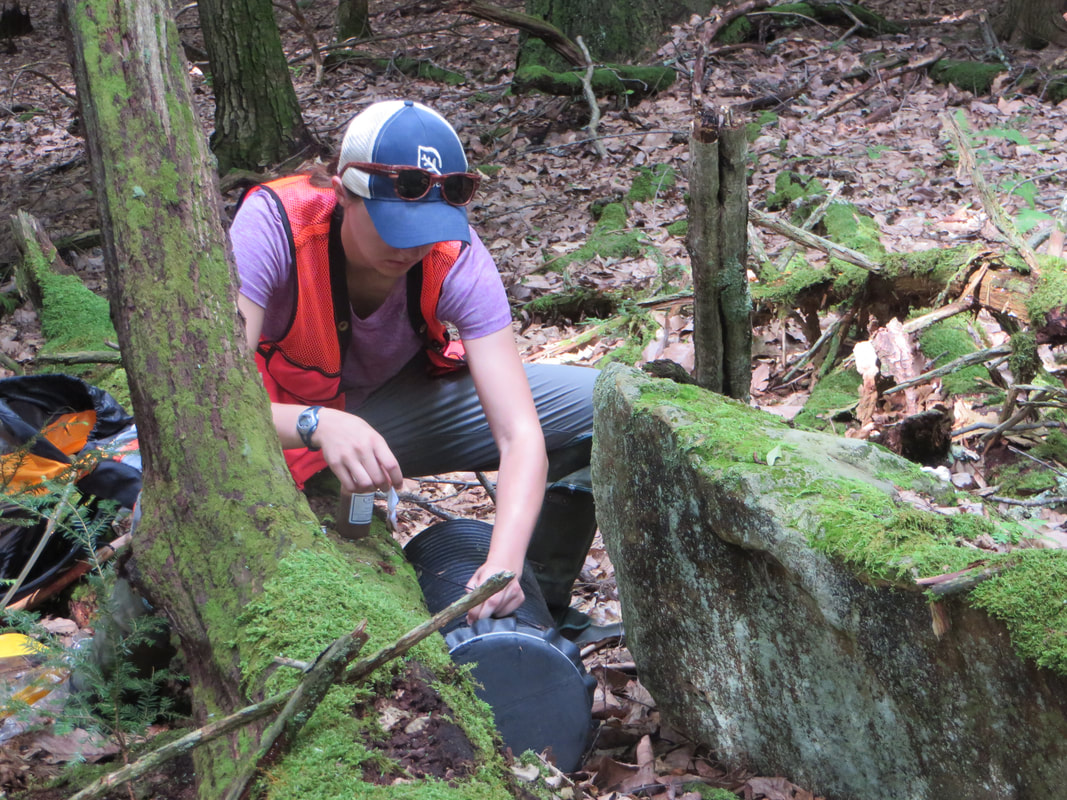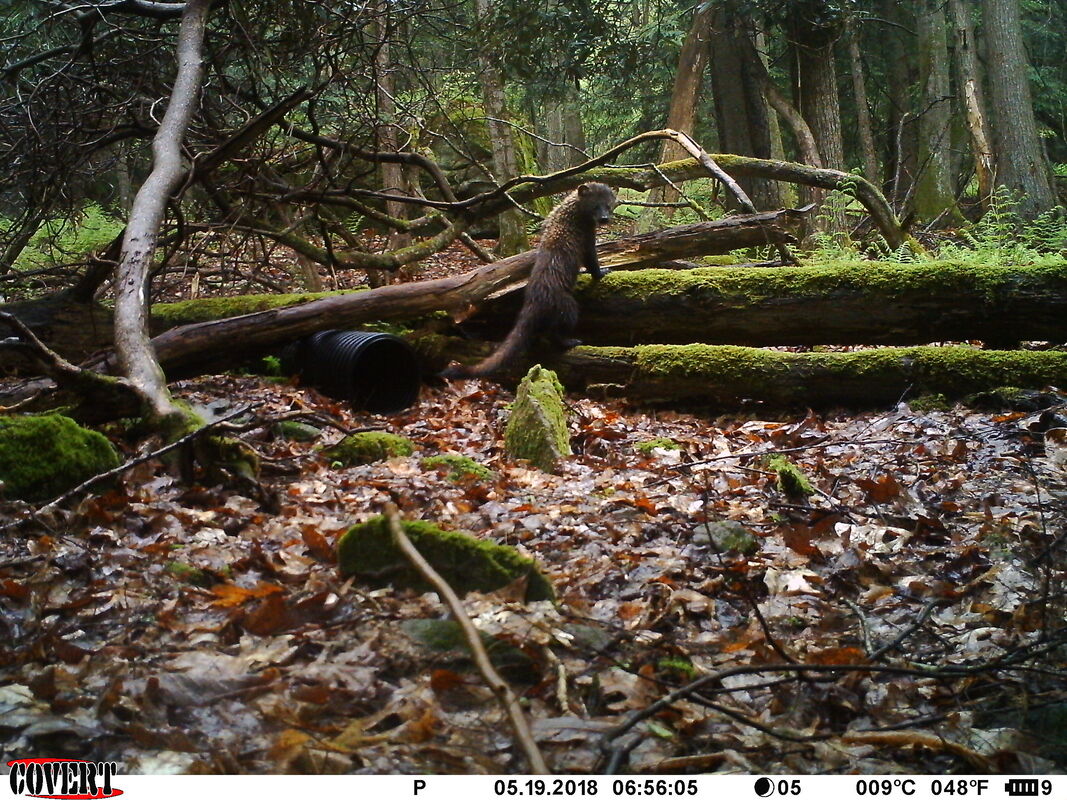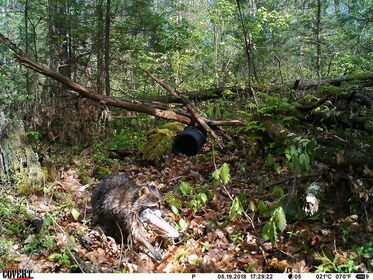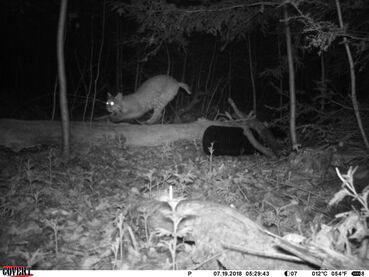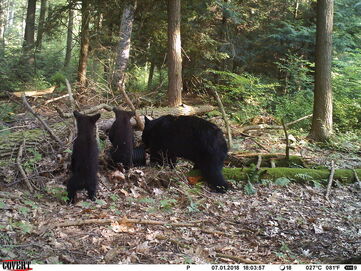Research
|
I have included a brief description of some of the research projects I have been involved with. Click here for more information on publications.
|
Mesocarnivore Responses to Disturbances
Occurrence patterns and behavioral plasticity of mesocarnivore guild in Southeastern New England
Southeastern New England (RI, MA, CT) is one of the most densely human populated areas in the United States with all three states ranking 2:4 as the most densely populated states in the US. Additionally, this region has undergone rapid forest transformation into early succession as a result of a spongy moth (Lymantria dispar dispar) outbreak that caused mass tree mortality. This combination of anthropogenic and natural disturbance impacts our wildlife and where they can persist in a changing landscape. New England home to a wide-range of species, including 5 major mesocarnivore species: bobcat (Lynx rufus), eastern coyote (Canis latrans), fisher (Pekania pennanti), gray fox (Urocyon cinereoargenteus), and red fox (Vulpes vulpes). Understanding how these species distribute themselves on a landscape riddled with disturbance is crucial in evaluating mesocarnivore persistence in this region. I am examining the effects of two types of disturbance, climate, and seasonality on mesocarnivore occupancy dynamics to assess population distributions in Rhode Island and understand the implications of disturbance and climate on these species in the future to inform current management decisions in the state.
Southeastern New England (RI, MA, CT) is one of the most densely human populated areas in the United States with all three states ranking 2:4 as the most densely populated states in the US. Additionally, this region has undergone rapid forest transformation into early succession as a result of a spongy moth (Lymantria dispar dispar) outbreak that caused mass tree mortality. This combination of anthropogenic and natural disturbance impacts our wildlife and where they can persist in a changing landscape. New England home to a wide-range of species, including 5 major mesocarnivore species: bobcat (Lynx rufus), eastern coyote (Canis latrans), fisher (Pekania pennanti), gray fox (Urocyon cinereoargenteus), and red fox (Vulpes vulpes). Understanding how these species distribute themselves on a landscape riddled with disturbance is crucial in evaluating mesocarnivore persistence in this region. I am examining the effects of two types of disturbance, climate, and seasonality on mesocarnivore occupancy dynamics to assess population distributions in Rhode Island and understand the implications of disturbance and climate on these species in the future to inform current management decisions in the state.
|
|
Rhode Island Fisher Study (RIFS)Fine-scale movement, resource selection, and demographics of fisher in Rhode Island
Data on fisher in Rhode Island is primarily limited to information collected during harvest. The first trapping season for fisher in Rhode Island was established in 2000, and little to no historic records exist. Due to this, there is much we do not know about fisher in this small state. The focus of my dissertation will be monitoring fisher movement in areas where habitat would have historically been deemed unsuitable for fisher. I will also be evaluating resource selection and demographic rates of the species across the state to understand the factors that promote and limit fisher distribution and abundance in Rhode Island. This research will provide guidance for harvest management decisions. |
Muskrat EcologyCalculating overwinter survival, movements, and home range of muskrats in Pennsylvania
The ecology of muskrats (Ondatra zibethicus) as semi-aquatic rodents presents concerns about the role of their movements and space-use in population health and persistence, especially regarding disease transmission. With muskrat populations in decline across much of their natural range, and the lack of information existing for muskrats in the eastern U.S., the purpose of our investigation was to understand the ecology and space-use of individual muskrats within a region lacking historic data. We investigated the dwelling structure use, movements, home range, and survival of radio-tagged muskrats (n = 17) in an urban wetland complex in central Pennsylvania. We used locations collected from intensive radio telemetry monitoring to determine number of lodging structures used, hourly movement, and size and percent area overlap of home ranges. |
Muskrat HealthDefining muskrat exposure to pathogens, diseases and contaminants both historically across North America and in contemporary Pennsylvania
Wildlife disease surveillance is not only important in understanding species health, but implications of wildlife disease studies can also extend to human and domestic animal health. The monitoring of wildlife for emergent and epizootic diseases has been used to initiate preventative measures against future outbreaks in other wildlife, domestic animals, and humans. In this study we collected trapper-harvested muskrat (Ondatra zibethicus) carcasses following the 2018-19 PA trapping season and conducted full necropsies on each carcass. We also investigated relationships between exposure and landscape variables such as, landscape type (e.g. agricultural, forested, urban) and water body type (e.g. marsh, lake, pond, etc.) . Additionally, we conducted a retrospective study of historic muskrat exposure to pathogens, diseases, and contaminants across North America. |
Fisher Occupancy - PAUnderstanding fisher and multi-species occupancy in Pennsylvania
Fisher (Pekania pennanti) were reintroduced at six locations in the northern Pennsylvania wilds in the 1990's. Over the past three decades, fisher populations have expanded to cover much of the state and even into areas once believe unsuitable habitat for the species. In this study, we are investigating fisher occupancy, specifically as it relates to habitat and presence of other mesocarnivore species. We used a combination of scented and baited hair snares with camera traps to collect presence absence data of mammalian species, with fisher as the target species. In collaboration with Jessie Edson from the Applied Spatial Ecology lab at Penn State, we processed hair samples post-microscopy to determine individual identification. This study is still undergoing, and I will be sure to share more updates as they occur. |
